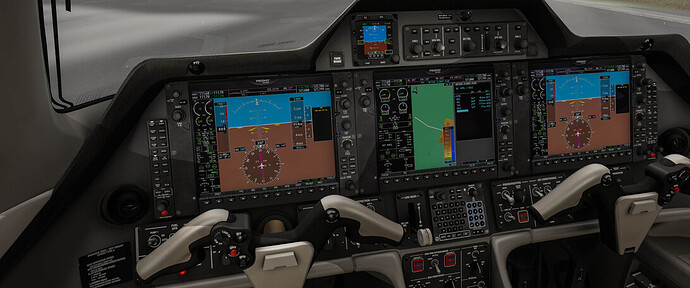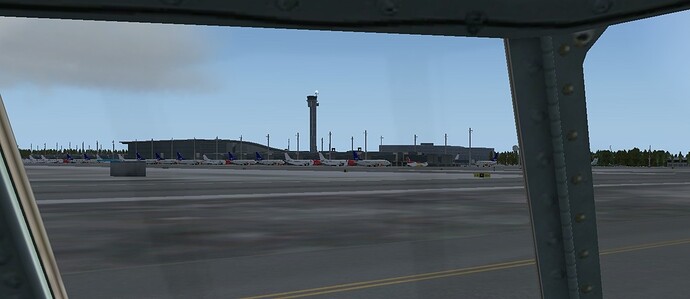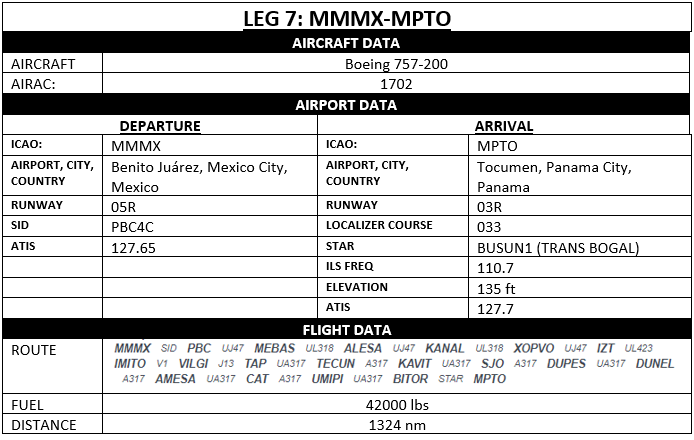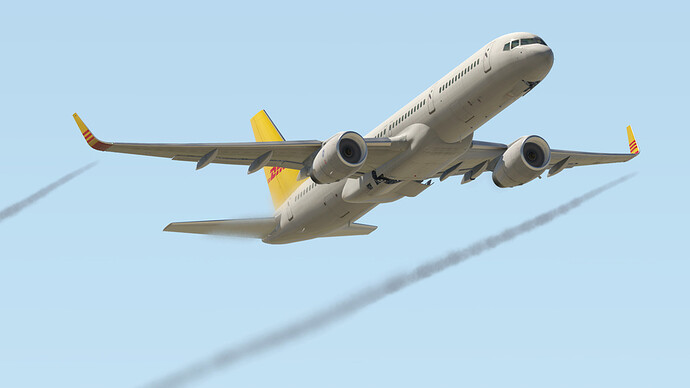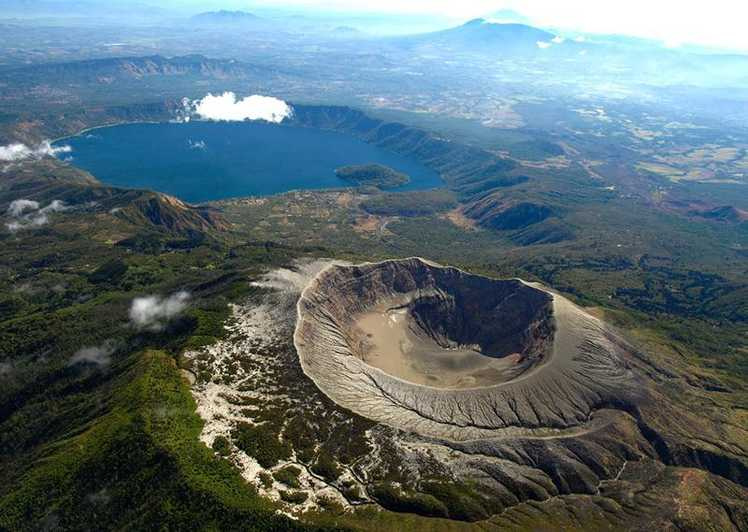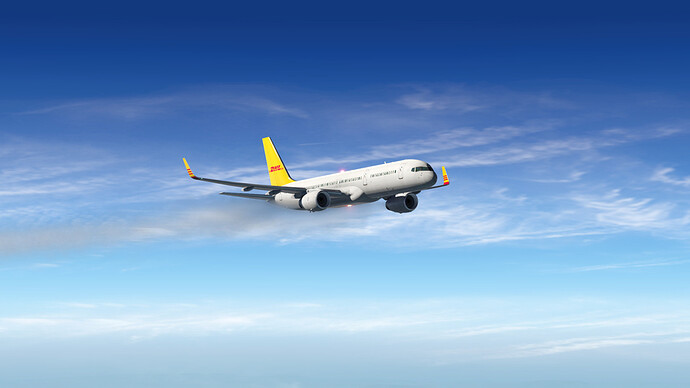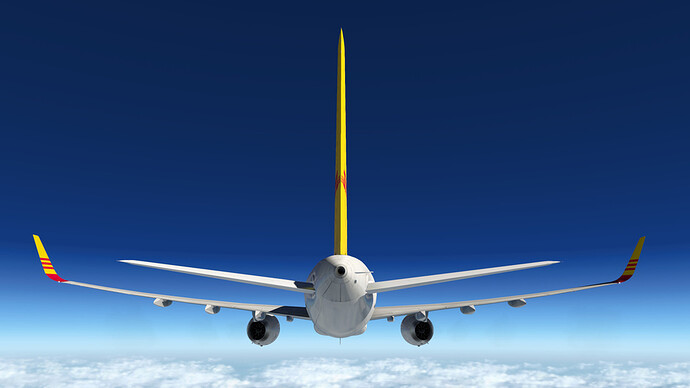Hampton to Pago Pago Leg 2 Continued - Trondheim, Vaernes to Helgoland-Dune:
Previously on Hangar200’s Xmas Flight:
As far as planes go, the 707 has been fun…still…
Whilst exploring Vaernes (ENVA) I wandered over to the military side of the airfield, showed the gate guard my USN ID card and they let me in. Then they asked if I wanted to fly this baby on my next couple of legs.
Just climbing back onto the flight deck of CS’s C-130 was like meeting an old friend. I took a quick survey of the 2D pop-up panels and went over the start up checklist. Rather than fly a FamFlight around the field I decided to just go for it.
Since I would be flying over Scandinavia (with ORBX Norway Scenery) and eventually into Germany (with N and S Germany scenery) I decided to keep it fairly low–8500 ft MSL over the Norwegian mountains, dropping down to 5500 ft over the North Sea and eventually lower as I approached Helgoland-Dune (EDXH).
Why Helgoland?
My choice of Helgoland may puzzle some. Two reasons: 1) ver short runways 2) Awesome Aerosoft scenery. The trip would be all VOR-toVOR (with and ADF thrown in for good measure). I would use other NAVAIDs as well as landmarks to cross-reference m position as we went along. That meant I’d need some decent aero charts. Fortunately I have a few FSWidgets apps on my iPad. The Europe TPC or ONC work well enough although they don’t cover north of 60ºN…no worries, I couldn’t go wrong by just heading south.
The “Hercy-bird” is not overly complicated to get started–GTC (Gas Turbine Compressor…in other words an APU) for power and starting air, Fuel pumps on, Condition levers to Flight and smack the Start button…actually there are some electrical busses you need to power up and the hydraulics need to be off line, to include Non Skid…and there a couple of other systems set to the correct state…actually it is a bit complicated. But after a few missteps I had everything up and running.
CS’s C-130 comes with a small app called ACE (Aircraft Configuration Editor) that lets you put on liveries and, more important, set the fuel and cargo load, telling you when you are over Max weight. It also lets you set your callsign (keep that in mind). When I used ACE to set up the plane I made sure I was below Max weight but was still carrying a lot of fuel. “But what about landing on that shore EDXH runway?” This C-130 comes with a fuel dump system. My plan was to fly to the last waypoint before EDXH and then dump down to a light weight (4500 lbs) that would give me 2-3 looks at the runway and enough for a 45 Nm divert (to an 8,000 ft runway with ILS).
The previous day, I had changed the aircraft’s callsign in FSX from “Husky” to “Norsman” which I thought sounded better. But when setting it up in ACE I saw the Husky callsign would replace Norsman and decided not to mess with it.
With the plane all set, I called for taxi to the active and was given directions for RWY 09. I noticed that they used the Norsman callsign. “That’s strange”, I thought but ignored it.
New Hangar200 rule:
Whenever you think, “That’s strange”, stop and check everything…it goes along with “You shouldn’t do that” from Leg 2)
The taxi was uneventful…
…definitely want to keep to the center line here…
…getting to the end and slowing so I don’t end up “in the drink”.
I taxied to 09, received TO clearance and pulled out onto the runway. The check list calls for standing on the brakes and moving to full power (throttles to the stops), watch the engine gages for everything to smooth out and then release the brakes. I did so.
My TO speed from the chart was 120 kts. From 0 to 60 kts the procedure s to keep the yoke slightly down to allow for NWS; above 60 kts, yoke to neutral until Vr, then a light back pressure to achieve an initial 10º nose up. (You can easily over rotate and drag the tail).
At 120 knots I did as proscribed…nothing…130 knots…nothing…”Hmmm…this TO run sure is taking a long time”…140 kts…ehhh…145-ish knots the nose came reluctantly up…I barely got airborne with the 27 end coming on fast…something was definitely amiss.
When at the correct weight with correct flaps settings, a C-130 can make combat takeoffs, something like 30ºnose up and awesome FPM (the VSI goes to 5k FPM). Today was evidently not one of those days. I was flying and had managed not to hit the trees beyond the end of the runway, however I was headed into a valley–terrain to both sides and a mountain straight ahead. Time to do some of that pilot stuff Mav.
The first waypoint the VNA VORDME was behind and to my right (SW of me). I had planned a right climbing turn. However the terrain to the north was lower, so I started a left climbing turn as I cleaned up the aircraft. That meant I’d be heading back “over” the flight path into the active, not always a good idea.
Sure enough, an SAS flight is on final…“Norsman 953 has the traffic.”
To go behind the SAS plane I had to extend a bit which put me off course for my first waypoint. I got near enough to it and since I was receiving my second WP’s VOR signal, so as soon as I crossed the initial fix, I turned on the planned course.
AP on (you also have to turn on the 3 servo motors…just like real thing) and engaged, set Track and initially left it in HDG since it matched pretty well. I climbed at about 1500 FPM and was at 8500 ft in no time. Soon enough the mountains were in view.
The view out a C-130’s flight deck windows is excellent.
The Situation: (No not the guy fro the Jersey Shore reality show) I must be heavy…why? Taking a look at my fuel gauges, every tank was full! So the ACE save hadn’t changed anything and FSX had used the default load–100% fuel. 135,000 lbs is about max TO weight (145,000 max overload…think combat)…a little rough mental mat told me I was probably in the 145,000 pls category, depending on my cargo weight…I had a situation on my hands.
No problem, that’s why they invented the fuel dump! I set up to dump fuel from the external and auxiliary tanks.
More on the C130 Fuel System:
EDIT: I finally found the fuel management section in the manual and discovered that my memory was off some - the corrected version follows:
The C-130 uses a fuel manifold system where any pump/tank can pressurize the manifold. Likewise, any tank can be shut off from the system. The fuel system s all in the wings. There is a valve (crossed separation valve) between the left and right sides/wings of the system. So there are multiple ways to set up the fueling system. Obviously, being a military aircraft, this is so you can rout fuel around battle damage.
Takeoff: Each engine pump on / engine tanks closed from the manifold / cross feed separation valve closed.
Cruise: it depends: For shorter flights, External tanks connected and pumps on; Aux tanks disconnect, pump off; Engine tanks connected and initially pumps off (allows for faster drain of the external tanks but need to watch external tanks level and turn engine tank pumps when external tanks get below 1,000 lbs); cross feed separation valve closed. This will empty the external tanks sooner so they will be empty on landing (desired). When externals are empty: external pumps off / manifold valve closed; Auk tanks pump on / manifold valves open. For Longer flights, reverse the process. The Aux tanks only have one pump (the externals have 2) so if you lose an Aux pump you still have external fuel.
Fuel balancing is pretty strait forward using the cross feed separation valve. You basically use the pumps (on/off) and manifold valves to move fuel around. As far as I can tell, the fuel doesn’t fill another tank, but engine(s) tank connected to the manifold / pump off, will draw fuel from the manifold vice the engine tank. So yo watch levels in whatever tanks that are feeding the manifold - when it/they match the light side, light side pumps back on, cross feed separation valve closed. When engine tanks are at 6000 lbs, (Aux and externals empty) then all engine tanks manifold valves are closed.
Landing: Same as takeoff unless AUX are dry. If so they will be disconnected and pumps off.
For a fuel dump, the way it is supposed to work is that you pressurize the system, open the dump valves for the tanks to be dumped, then open the overboard valves.
I clicked the dump overboard valves on and…WTF…all the tanks’ dump valves went to open…OK, I can deal with this, except it nothing seems to be dumping…scanning the gauges…double take on Tank 1, it is going below 4000 lbs in a hurry. 
(This is a “sim-ism” - to get the fuel manifold to work, they had to add some virtual tanks. I remembering this working fine in FS2004 but evidently something ”broke” when updated to FSX).
OK, technically I could dump down to an acceptable level, but the aircraft would be way out of L-R balance. I needed to stop to rectify things. Fortunately Oslo- Gardermoen (ENGM) was not too far off my track so I turned towards Oslo in the vicinity of Drammen…cool bridges.
I might as well do some sightseeing along the way. Downtown Oslo with the Royal Palace. My wife went to kindergarten on the palace grounds…“Hey honey! I can see your house from here!”
During the way I lowered my altitude and throttled up–might as burn up as much as I can.
Both 1L (12K ft) and 1R (10K ft) were active. I knew there was a military terminal/parking area…I seem to recall it was off the western side of 1R so I requested that runway. If I was still overweight for landing, I doubted !R’s 2,000 extra ft would be all that help.
I made a norm landing…
…and was directed to parking (which I ignored) and taxied to where I
thought the military apron was…only to discover I was mistaken…
… but there was a big SAS maintenance facility where I could park…maybe those guys could help me out.
Parking brake ON; GTC ON; power to the AC bus, Engine Generators OFF, Condition lever to Feather…and open the big Cargo deck does just for fun; a smattering of other housekeeping switch throws…just about to finish…
GTC off…, and finally Battery Off.
As I did my post flight walk around I noticed that the Fuel Dump had really messed up the L-R balance…it had pulled a bit to the right on landing.
Conclusions:
I logged a 2.6 hr flight and was busy pretty much all of the time…although I don’t endorse forgetting to check fuel level before takeoff as a valid reason to keep one busy during a flight. My Aerosoft Mega Airport scenery for ENGM had not been high enough in the scenery stack…but the ORBX is pretty good.
Time for an FSX restart, put Aerosoft’s ENGM to the top of the scenery stack (and make sure EDXH is up there too), figure out where the Mil Parking is (oh look, by the eastern end of 1R…@#$%!), reset the aircraft (virtually towed), and reset the fuel…then I should be ready to go.
Stay Tuned…



